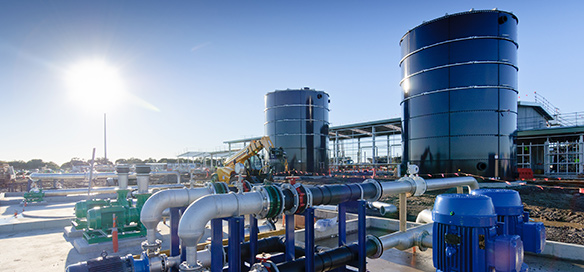Authorities have refused to reveal whether Geelong was among four regional Victorian areas where tests detected a “highly concerning” increase ice use.
Australian Criminal Intelligence Commission revealed the wastewater testing results this week but declined to reveal to the Indy whether Barwon Water was involved, saying that only state and regional data was available for release.
Barwon Water also baulked at revealing whether it was involved despite allowing the Penington Institute to test local wastewater for a 2014 study on methamphetamine use.
The institute’s report indicated that ice had become the predominate form of methamphetamine, to the point where the less-potent ‘speed’ variety had practically disappeared.
Criminal intelligence commission chief Michael Phelan expressed concern for regional Victoria after releasing the fourth annual report from the National Wastewater Drug Monitoring Program this week.
“It is highly concerning to see methylamphetamine (ice) consumption on the rise in regional sites in Victoria,” Mr Phelan said.
“This destructive drug is having a terrible impact not only on users, but on families, first responders, health practitioners and the community more broadly.”
The data indicated that ice use was increasing in regional areas but decreasing in capital cities, Mr Phelan said.
He was pleased to note a decrease in the use of heroin and MDMA across both regional and metropolitan Australia during the study period, from August to December 2017.
“The National Wastewater Drug Monitoring Program provides a clear picture of changing trends in the consumption of methylamphetamine and 11 other drugs across Australia,” Mr Phelan said.
“Armed with this information, government, health and law enforcement agencies can better target policy and operational responses and reduce the impact of drugs in our society.”
The report also provided “conservative estimates” of the weight of drugs consumed in tested areas, Mr Phelan said.
“We estimate that over 8.3 tonnes of methylamphetamine is consumed in Australia each year, as well as over three tonnes of cocaine, 1.2 tonnes of MDMA and 700 kilograms of heroin.
“Such estimates can then be compared with other data, such as the weight of drugs seized by law enforcement, to further enrich our collective understanding of these drug markets and identify the most effective supply, demand and harm reduction measures.”
The program monitored 45 wastewater “sites” across Victoria. Six were in Victoria, two of which were in Melbourne.
The program tested for 12 substances in wastewater from 54.3 per cent of the national population.
In Victoria the program also determined that:
• nicotine and alcohol remained the highest-consumed substances;
• average cocaine consumption decreased in capital cities increased in regional areas;
• Victoria and the Australian Capital Territory had the highest average capital city heroin consumption in the country; and
• Victoria had the highest average regional consumption of oxycodone in the country.
Get the latest news to your email inbox FREE!
REGISTER






